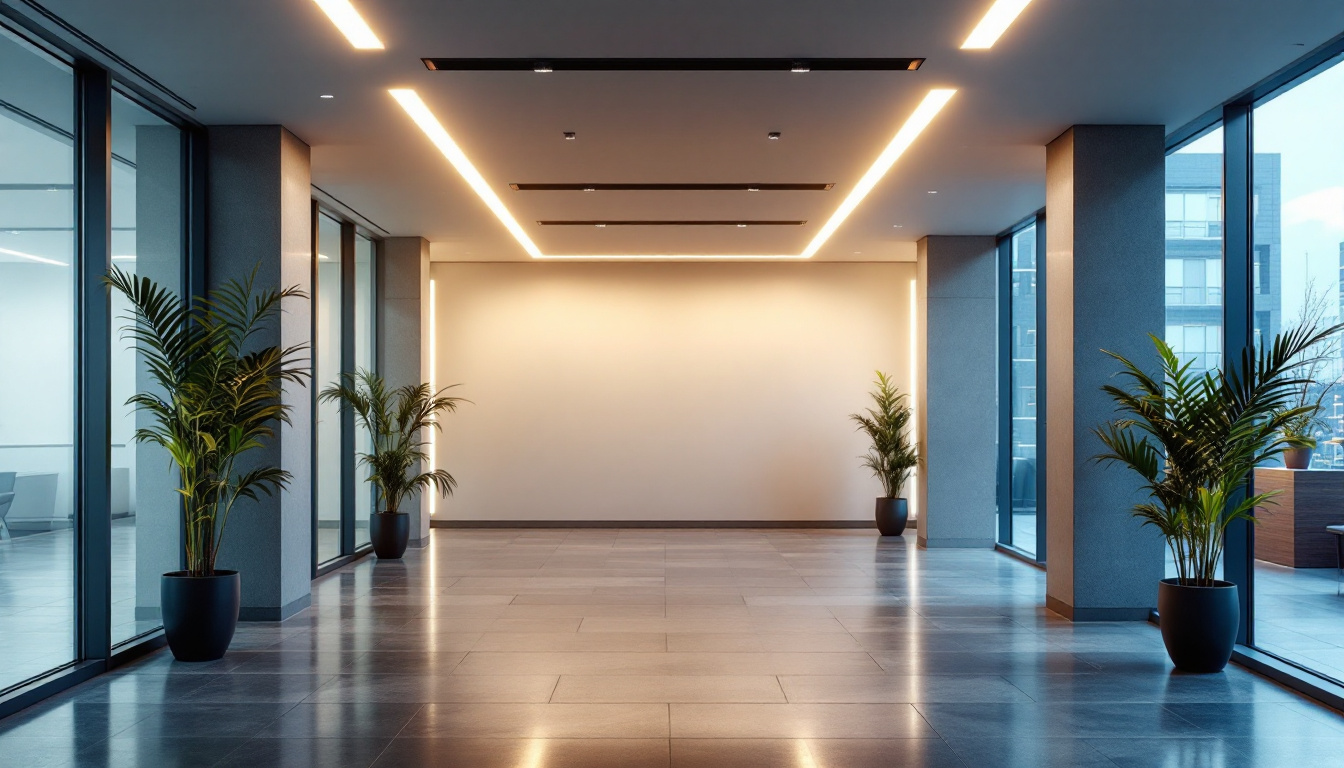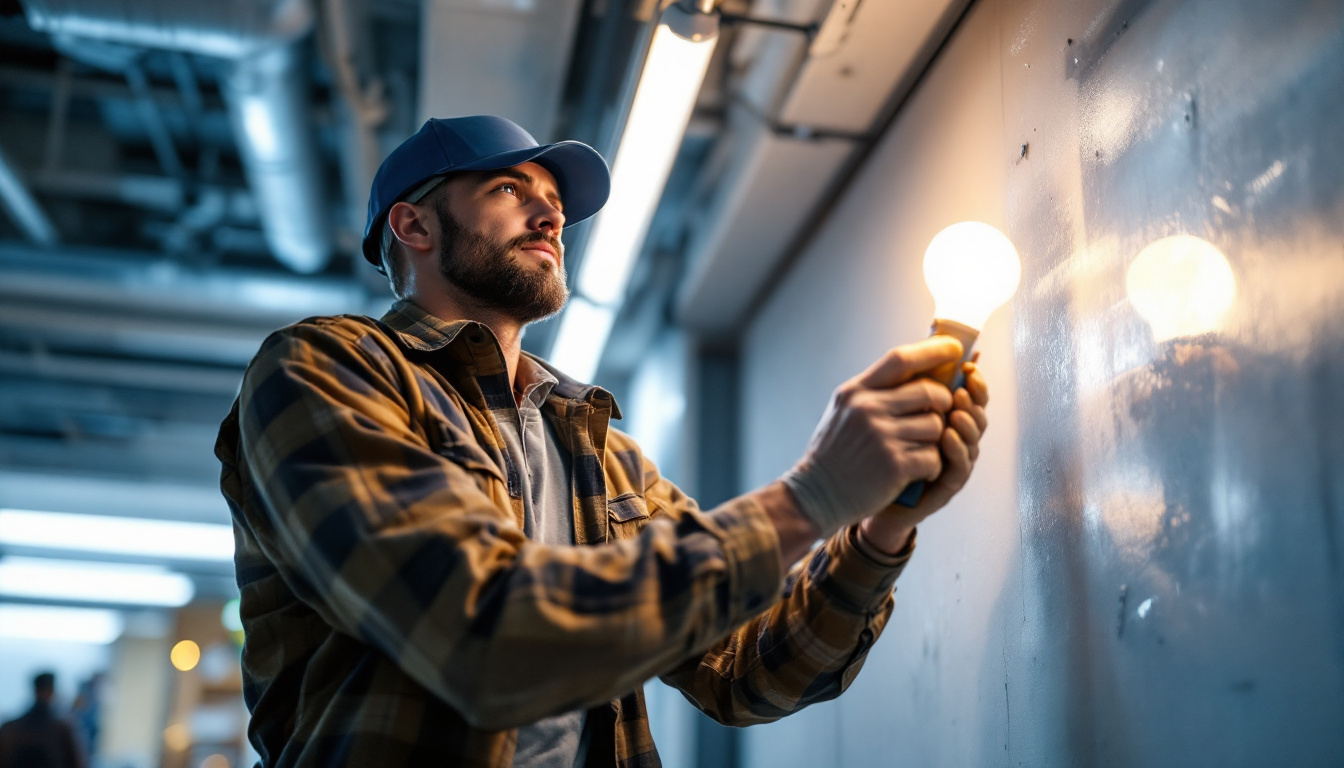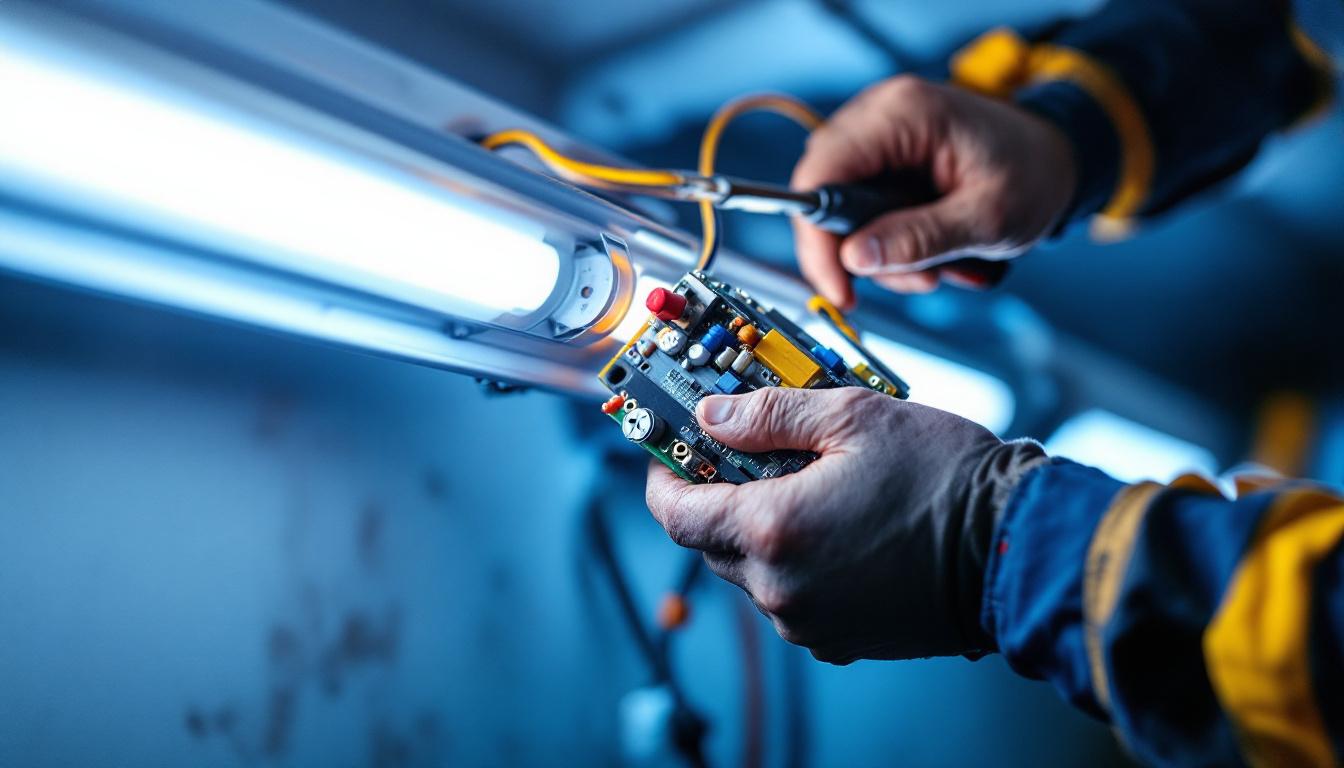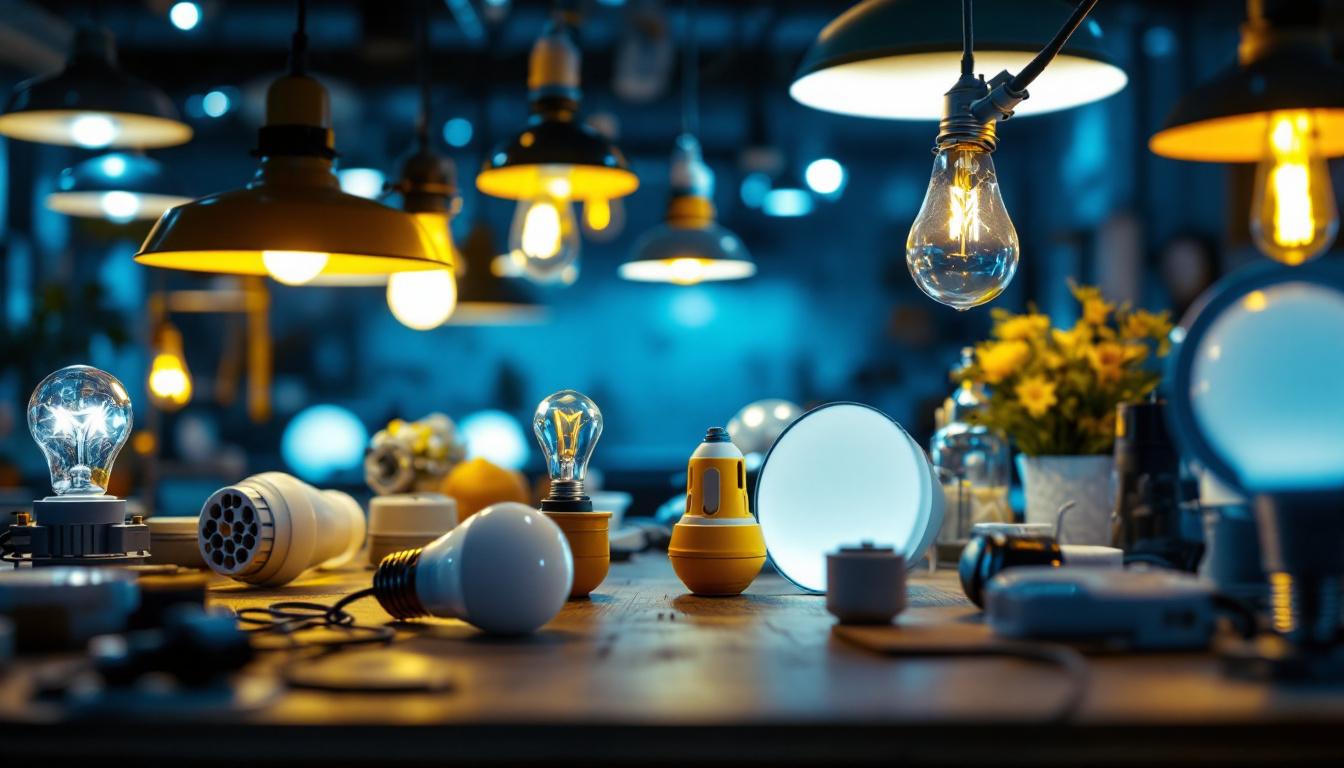
Lighting projects are essential components of any construction or renovation endeavor. As technology evolves, so do the expectations surrounding lighting solutions. For lighting contractors, understanding how to future-proof these projects is crucial not only for client satisfaction but also for maintaining a competitive edge in the industry. This article explores key strategies and considerations for ensuring that lighting projects remain relevant and efficient in the face of changing technologies and requirements.
Future-proofing lighting projects involves designing systems that can adapt to new technologies, changing regulations, and evolving user needs. This proactive approach minimizes the need for costly upgrades and ensures that installations remain functional and efficient over time.
As energy efficiency standards tighten and smart technology becomes more prevalent, the importance of future-proofing cannot be overstated. Clients are increasingly looking for solutions that not only meet their immediate needs but also anticipate future developments in the lighting landscape. By embracing a forward-thinking mindset, stakeholders can ensure that their investments remain relevant in a rapidly changing environment.
One of the primary benefits of future-proofing lighting projects is cost savings. By investing in adaptable systems, contractors can reduce the likelihood of needing significant retrofits or replacements. This not only saves money but also minimizes downtime and disruption for clients. Moreover, the integration of modular components allows for easy upgrades, enabling clients to enhance their systems without undergoing extensive renovations.
Additionally, future-proofed lighting systems can enhance property value. Buildings equipped with modern, efficient lighting solutions are more attractive to potential buyers or tenants, making them a wise investment for property owners. These systems often feature advanced controls and automation, which can lead to lower operational costs and improved occupant comfort, further increasing the desirability of the property.
Clients are increasingly aware of the rapid pace of technological advancement. By offering future-proof solutions, contractors can build trust and demonstrate their expertise, leading to higher client satisfaction and repeat business. When clients feel confident that their lighting systems will remain relevant and efficient, they are more likely to recommend the contractor to others. This trust is further solidified when contractors provide ongoing support and maintenance, ensuring that systems are updated in line with the latest advancements.
Moreover, the ability to customize lighting solutions to meet specific client needs enhances the overall experience. By incorporating user feedback and preferences into the design process, contractors can create tailored systems that not only fulfill current requirements but also allow for easy modifications in the future. This level of personalization fosters a strong client-contractor relationship, as clients feel valued and understood, ultimately leading to long-term partnerships that benefit both parties.
To effectively future-proof lighting projects, contractors should consider several strategies that encompass design, technology, and installation practices. These strategies can help ensure that lighting solutions remain efficient and adaptable over time.
Smart lighting technology is at the forefront of the future-proofing movement. By integrating smart controls and IoT (Internet of Things) devices, contractors can create systems that are not only energy-efficient but also capable of adapting to user preferences and environmental changes.
Smart lighting systems allow for remote control and automation, enabling users to adjust brightness, color temperature, and even scheduling through mobile applications or voice commands. This level of control enhances user experience and ensures that lighting systems can evolve with changing needs. Furthermore, these systems can gather data on usage patterns, providing insights that can lead to further optimization of energy consumption and user comfort. As technology advances, the integration of artificial intelligence could also enable predictive adjustments based on user habits, making smart lighting systems even more intuitive and responsive.
Energy efficiency is a critical consideration in any lighting project. By selecting LED fixtures and incorporating energy management systems, contractors can help clients reduce their energy consumption and costs. Moreover, energy-efficient systems are often eligible for rebates and incentives, providing additional financial benefits.
In addition to selecting energy-efficient fixtures, contractors should also consider the overall design of the lighting system. This includes optimizing placement to maximize natural light and using controls that adjust lighting based on occupancy and daylight availability. Implementing daylight harvesting strategies, for example, can significantly reduce reliance on artificial lighting during peak daylight hours. Additionally, educating clients on the long-term savings associated with energy-efficient lighting can foster a deeper appreciation for sustainable practices, encouraging them to invest in technologies that not only benefit their bottom line but also contribute to environmental stewardship.
Scalability is another important aspect of future-proofing. As businesses grow or change, their lighting needs may evolve. Designing systems that can easily be expanded or modified ensures that clients can adapt their lighting solutions without significant disruptions or additional costs.
Using modular components and flexible wiring systems can facilitate scalability. This approach allows contractors to add or remove fixtures and controls as needed, making it easier to accommodate future changes. Additionally, planning for scalability involves anticipating potential technological advancements and ensuring that the infrastructure can support future innovations. For instance, incorporating standardized protocols and interfaces can make it easier to integrate new technologies as they emerge, thereby extending the lifespan and relevance of the lighting system. By fostering a mindset of adaptability, contractors can help clients navigate the ever-evolving landscape of lighting technology with confidence.
Effective design is a cornerstone of future-proof lighting projects. By considering various factors during the design phase, contractors can create systems that are not only functional but also adaptable to future needs.
Choosing versatile fixtures is essential for future-proofing. Fixtures that can accommodate different types of bulbs or that offer adjustable features can easily adapt to new technologies as they emerge. This flexibility allows clients to upgrade their systems without needing to replace entire fixtures.
Additionally, selecting fixtures with a timeless aesthetic can ensure that they remain appealing for years to come. Trends in design may change, but a classic look can withstand the test of time.
Understanding the end-users’ needs is vital when designing lighting systems. Engaging with clients to gather input on their preferences and requirements can lead to more effective and satisfying solutions. User-centric design considers factors such as usability, comfort, and aesthetics, ensuring that the lighting system enhances the overall experience.
Furthermore, providing options for customization allows users to tailor their lighting experience. This could include adjustable color temperatures, dimming capabilities, or even personalized lighting scenes that cater to different activities or moods.
As sustainability becomes a priority for many clients, incorporating environmentally friendly practices into lighting projects is essential. This includes selecting energy-efficient fixtures, utilizing sustainable materials, and designing systems that minimize light pollution.
Contractors should also consider the lifecycle of the products they use. Opting for fixtures and components that are recyclable or made from sustainable materials can significantly reduce the environmental footprint of a lighting project.
Proper installation practices play a crucial role in the long-term success of lighting projects. By adhering to best practices, contractors can ensure that systems are not only functional but also adaptable to future changes.
Staying informed about industry standards and regulations is vital for contractors. Compliance with these guidelines ensures that lighting systems are safe, efficient, and up to code. Moreover, adhering to best practices can prevent costly rework or retrofitting in the future.
Regular training and education for installation teams can help ensure that they are aware of the latest standards and technologies. This commitment to ongoing learning can enhance the quality of installations and client satisfaction.
Advanced installation techniques can significantly enhance the adaptability of lighting systems. For example, using wireless technology for controls can simplify installation and reduce the need for extensive wiring. This not only speeds up the installation process but also allows for easier modifications in the future.
Additionally, implementing a structured approach to installation, including thorough documentation and labeling of components, can facilitate future upgrades and maintenance. Clear records of the system layout and specifications make it easier for contractors to address any changes or issues that may arise.
Once installation is complete, thorough testing of the lighting system is essential. This process ensures that all components are functioning as intended and that the system meets the client’s expectations. Regular optimization can also help identify areas for improvement, ensuring that the system remains efficient and effective over time.
Encouraging clients to provide feedback on their lighting experience can offer valuable insights for future projects. This feedback loop can help contractors refine their approach and better meet the evolving needs of their clients.
Future-proofing lighting projects is not just a trend; it is a necessity in an ever-evolving industry. By embracing smart technology, prioritizing energy efficiency, and implementing scalable designs, lighting contractors can create systems that stand the test of time.
Through thoughtful design and installation practices, contractors can ensure that their lighting solutions remain relevant and efficient, ultimately leading to increased client satisfaction and long-term success. The commitment to future-proofing not only benefits clients but also positions contractors as leaders in the lighting industry, ready to tackle the challenges of tomorrow.
Ready to elevate your lighting projects with the assurance of quality and value? Look no further than LumenWholesale. Our spec-grade lighting products are designed to help you stay ahead in the industry, providing the adaptability and efficiency your clients demand. With unbeatable wholesale prices and free shipping on bulk orders, you can secure the best lighting solutions without the burden of inflated costs. Wholesale Lighting at the Best Value is just a click away. Partner with LumenWholesale today and future-proof your lighting projects with confidence and convenience.

Discover the ultimate guide for lighting contractors on transitioning from fluorescent to LED lighting.

Discover the essentials of track lighting interchangeability for contractors.

Discover the essential guide to electronic ballasts for fluorescent lamps, tailored for lighting contractors.

Discover what a ballast for a light is and how it can enhance your lighting installation projects.